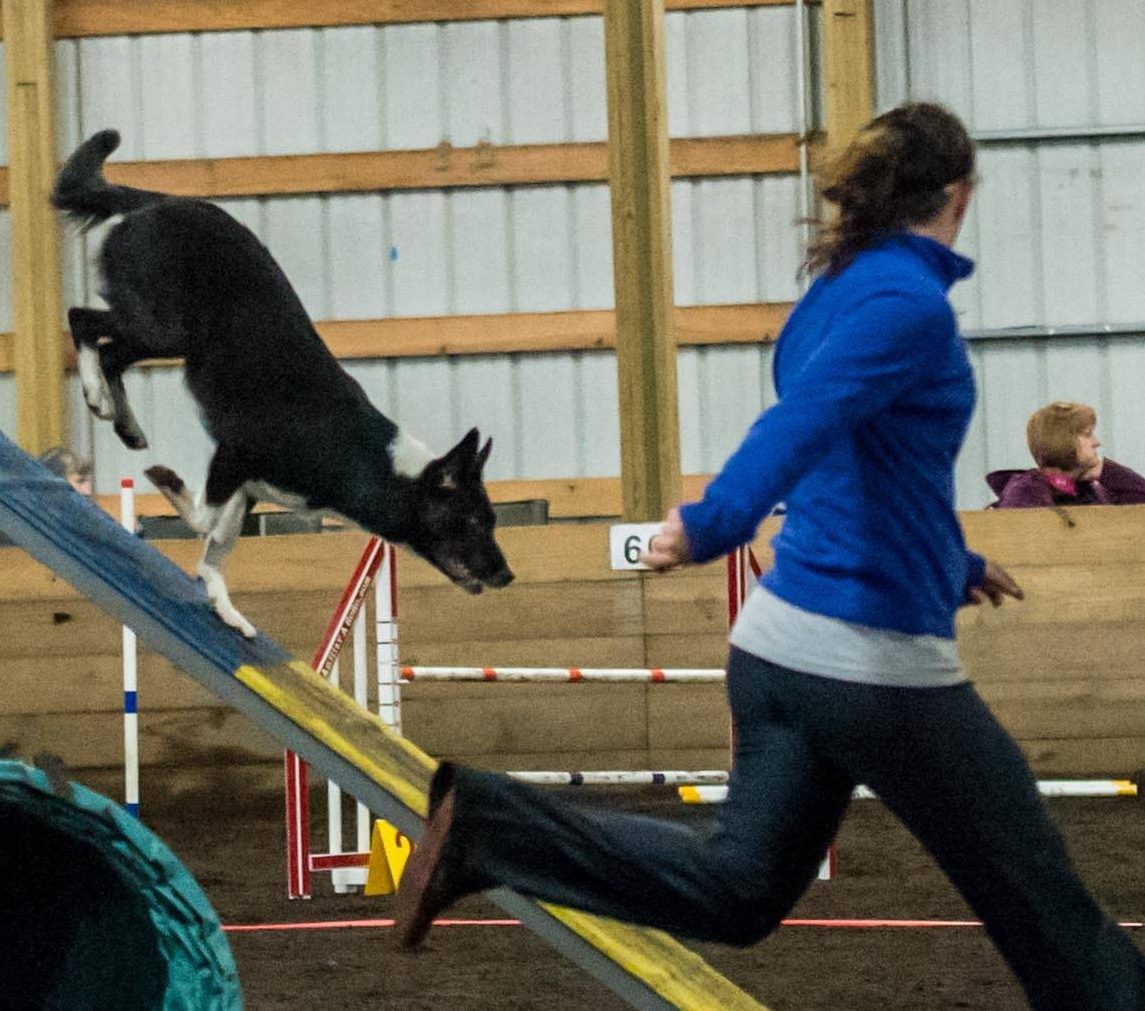FAQs: Everything You Need to Know About Running A-Frames in Agility!
Recently, I asked the Fenzi Dog Sports Alumni Group about Running A-frames:
- What do you struggle with most when teaching it?
- What do you struggle with most when handling a running A-Frame on course?
- What questions do you have about running A-Frames or myths that need debunking?
The questions were fantastic and they were plenty, so read on for all of those questions and all of my answers!
Q: Is training a running A-Frame easier than training a stopped (2o2o) A-Frame?
A: I believe that both end behaviors require the same systematic training approach to create solid performances. However, I also believe that a running A-Frame does not have the same layers as the 2o2o. The end behavior of the running A-Frame is simple: the dog hit the target or they didn't. The 2o2o end behavior includes the dog moving into position and the handler's clean mechanics surrounding the release, therefore making maintaining the 2o2o behavior slightly more influenced by the handler's mechanics.
Q: Is there a "best" size for teaching a running A-Frame to?
A: Not really. Some dogs will have a stride length that naturally takes them into the yellow, making it easy to reinforce the correct behavior. Some dogs will need to be taught to extend their stride slightly to make it easy to reinforce the correct behavior. Some dogs will need to be taught to collect their stride to make it easy to reinforce the correct behavior. In all three cases, I take the same training approach, adjusting things as needed for each individual dog.
Q: Do you have to accept 20-30% failure with a running A-Frame?
A: Absolutely not. Dogs make mistakes, sure, but your dog's running A-Frame performance will hold the success rate that reflects your training. To accept a 20 - 30% failure rate is to accept that you still have 20-30% more training to do.
Q: How can you encourage dogs to continue forward into the contact zone when you're handling from behind?
A: When teaching contacts (and weaves), I focus a lot on handler irrelevancy. This means that through optimal placement of reward and layering in different handler positions early on in the training, it makes the dog's job more clear.
Q: My dog leaves the contact high when I'm ahead. How can I train through that?
A: By layering in different handler positions early on in the training the dog has a higher value for hitting their target, and less value for watching where the handler is.
Q: Arousal changes my dog's striding in competition. How can I train through that?
A: We can layer in arousal in training with the use of our reinforcers, the use of the environments we train in, the obstacles we use before and after the A-Frame, and our handling surrounding the A-Frame to prepare our dogs for performing to criteria in competition.
Q: How do you teach turns off of a running A-Frame?
A: I'm going to sound like a broken record here, but by introducing your handling (physical and/or verbal) cues to the target behavior before adding it to the A-Frame, your dog will have already mastered the needed stride adjustments to both hit the target and follow your handling.
Bonus: All of the foundation skills are what I would go back to when problem-solving with seasoned dogs.
Q: How do I transition from just the A-Frame to sequencing?
A: One step at a time. You can include sequencing when you are first teaching the end behavior on the flat, allowing the dog to learn to focus on the target and then adjust for the next obstacle, and also with an obstacle before, the dog can learn to adjust their stride to hit the target regardless of the approach.
Q: Do you need regular access to the A-Frame with to train a running contact performance?
A: You need as many training sessions as it takes. Do I believe they all have to happen within a certain amount of time? Not necessarily. I have trained many dogs to a solid running A-Frame performance with only access to the necessary equipment on a weekly basis.
Q: If training both a stopped and a running contact performance, which one do you train first?
A: Because the end behaviors can be taught one separate props, you can actually teach the end behaviors at the same time. As for introducing them to the equipment, I'd choose one first, get it solid, and then re-introduce the second behavior onto the A-Frame separately. I do not have a strong preference for which one is introduced first.
I hope this Q&A is helpful to you! If you're interested in training your running A-Frame with me, I encourage you to check out my new upcoming FDSA class: "You've Been Framed: Running A-Frame Training" currently open for registration!
By accepting you will be accessing a service provided by a third-party external to https://www.fenzidogsportsacademy.com/
